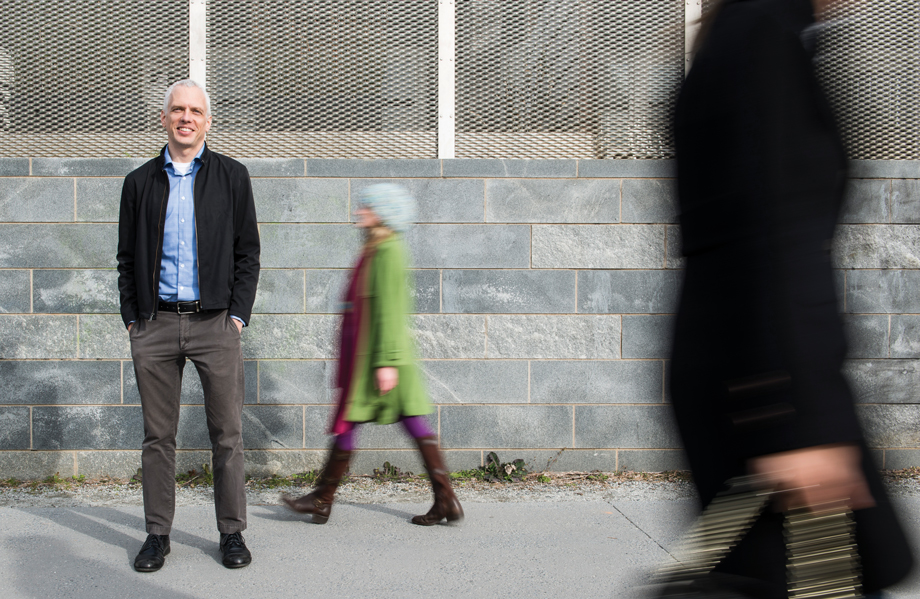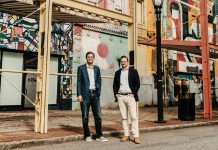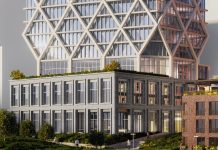
Photograph by Todd Burandt
Today the BeltLine has become so imprinted on our civic DNA that it’s easy to forget how far it’s come, and how fast. Those walkers and joggers and strollers and cyclists clogging the Eastside Trail on the weekends? Those insanely priced apartments overlooking it? What’s now a destination was, until very recently, trash and kudzu. And it’s not hyperbole to say it would be still if Ryan Gravel hadn’t decided in 1999 to write his Georgia Tech master’s thesis on how four different rail lines encircling the city could be strung together. The resulting 22-mile tree-lined loop, he argued, could connect neighborhoods, get residents out of their cars, and link up with MARTA stations. “It was a sensible and interesting, almost obvious, proposal,” Gravel writes in his book Where We Want to Live, which comes out this month. Of course, Atlanta’s history is full of sensible proposals that went nowhere. Gravel’s book recounts how the BeltLine went from the theoretical to the real—and how far it still has to go.
But Where We Want to Live is more than just history; as the title suggests, it’s also a contemplation of the real-life consequences that come from Atlanta’s—and America’s—obsession with the car. In a chapter we’ve excerpted here, Gravel examines his own childhood in Chamblee, and how development decisions that catered to the automobile have served only to increase our isolation. Time and again throughout the book, Gravel looks to other cities for inspiration—most notably Paris, where he spent a year abroad in college. Coming back from France, he writes, made him see the city of his birth in a different way. “The kind of compartmentalization created by sprawl didn’t seem like a very interesting way to live,” Gravel writes.
Just days after Gravel spoke with us, Mayor Kasim Reed announced that he would lead the Atlanta City Design Project, a kind of master vision that imagines how the city might look over the coming decades. The project will create a plan “to guide how Atlanta can grow equitably and sustainably while maintaining its core character.” Indeed, as the completed portion of the BeltLine has spawned rampant development, the issue of affordability will only intensify. As Gravel discusses both in his book and with us, how that issue is resolved will determine whether the BeltLine is, ultimately, a true success.
When you watch people on the BeltLine, what goes through your mind?
It’s surreal. But I won’t claim that it was me who made it all happen. I’m not the kind of person that would have pushed for it if people didn’t want it; it’s not my personality. The reason that we’re doing it is because people kept wanting it. We would talk to people about it, and they would fall in love with it. They would tell their friends.
When my wife, Karen, and I finished graduate school, we decided to stay because Atlanta has a sort of energy around it, like it’s going to be something else. It’s going to be a different place in 20 years. She’s an architect. For those of us in these fields—design, planning—to be a part of that transformation, the creation of what Atlanta is when it grows up, is something that you really can’t replicate in other cities. San Francisco is always going to be San Francisco. Boston is always going to be Boston. So for a city of our size to be poised to be something else is pretty exciting.
What is it about Atlanta that makes it open to experimentation in a way other places aren’t?
Maybe it’s a lack of regulations. Maybe it’s part of the upside to Atlanta being so resistant politically to a lot of the Northeastern ideas around labor. There are fewer restrictions on things. I don’t know, but I’m interested in exploring those questions.
The primary motivation for your thesis back in 1999 was simply to get your degree. Did you have any expectations for it beyond that?
I was interested in urban design, the space between architecture and design, and design on a city scale. After graduation, I jumped back and forth between planning jobs and architecture jobs. I never really imagined anything like [the BeltLine] was going to happen. Anybody who knew me at the time thinks it’s hilarious that I’m this person that goes around traveling, talking to crowds of people. It’s ridiculous.
There were ideas for utilizing these abandoned rail lines going back to the 1950s, including a “Cultural Ring” as recently as the 1990s. What was it about your idea that led to success when the others didn’t?
Partly it’s the packaging of it. And it’s the idea—that it’s built around transit. And there’s something really compelling about the loop. The BeltLine itself—a 22-mile loop, 22 miles of transit, 22 miles of the train, 45 communities along the way—was a very clear idea.
When people looked at [a rendering of the project], they would go to their neighborhood, find their house. There was no confusion about where it was, what it was. It was a conceptually simple idea, though obviously complex once you start getting the details.
The other thing is the timing. The city was beginning to grow. A lot of the new development in town was taking neighborhoods by surprise. People were starting to think about what was happening to the industrial quarter, especially in the east side—what the implications would be for their lives, primarily in terms of traffic. [Another] study looked at the disconnection that the railroad creates between communities in the city. Basically, as people from outside of the city were trying to get into the city for work, they were being forced to follow only the streets across the BeltLine. It was pretty congested. It was a belt of congestion.
At that moment this idea came along that said, “Hey, what if we turned this very corridor into a new kind of transportation corridor that would alleviate the traffic congestion but create the density that would allow the communities to be fully revitalized?” The communities saw that as an opportunity. They didn’t fight it as something crazy. They’d been looking at abandoned industrial land for a generation and fighting the negative consequences of the 20th century for a long time.
If we’re smart about all this change that’s coming to metro Atlanta and the nation, we would leverage this change to accomplish something really positive and not just fight against it. Because it’s a cultural momentum. Things are changing. The BeltLine is not the reason for the revitalization in the city. It’s a tool for managing that change. The change is coming—to Detroit and Memphis and Houston and everywhere else. People are moving back to the cities. People are innovating and changing the way that they live their lives.
Cathy Woolard, then the city council president, took up your idea. How pivotal was her advocacy?
Essential. We wouldn’t be doing it [without her]. I may have a lot of ideas, but I’m not the kind of person who pushes my ideas on people who aren’t interested. She came at it from a different angle. She saw the vision; she understood it intuitively. She also understood communities and how they worked, and the role that the communities would play in the implementation of the project. Not only did she understand it and understand how to do it, but she believed in Atlanta and was willing to commit her staff and time to do it.
You write in the book that one of the advantages of your idea was that it was “unfettered by reality.”
We were proposing an ambitious transformational project on railroads that the city didn’t own in a state that was, at least at the time, hostile to public transportation, in a city with competing ideas about what any investment in transportation might be. It was just wildly ambitious.

Courtesy of the Atlanta BeltLine
Given how far it’s come in the past 15 years, what are your biggest concerns about it going forward?
What’s critical is that as the city continues to grow and become more expensive, development really [needs to] be built for everyone, and we need the tools in place to make sure that everybody benefits from it—that it’s inclusive and not exclusive, that it comes along with policies and investments that allow the communities that made it come to life be able to stay and enjoy those benefits. It’s a hard problem to solve, but we need to be aggressive and bold about it.
Specifically, how do we ensure the kind of inclusivity that you’re talking about?
At the end of the day, you don’t keep communities affordable by holding them down. The answer is not to not build the BeltLine or to not build transit and trails and parks and grocery stores. That’s not the answer. Every investment makes a community more desirable. The problem isn’t the BeltLine; the problem is finances. If we have a financial problem, then we need financial tools.
I’m not a finance guy. I don’t understand money, but I do know that there are a lot of tools around the country to support people. It’s not rocket science. There are direct subsidies. There are policies like inclusionary zoning that require certain levels of affordability. There are ways to make those things happen by reducing taxes for people with lower fixed income.
There are also things that we should do to make sure that if a coffee shop is going to come to your community, that it’s not somebody else’s coffee shop, that it’s your coffee shop. So it’s providing the training, the capital—whatever it takes—to make people in these communities become the entrepreneurs themselves, so that they’re building not only personal business success but generational wealth for their families.
The communities and the people who are on lower fixed income were at the front lines advocating for this project, too. So we can’t call the project a success unless they’re included in that. I feel very strongly about that. We might say it’s already an economic success, but we have to make sure it’s an economic success for everyone. That’s a much higher bar. And at the end of the day, it’s not just people
on low income; it’s middle-income people who are finding it harder to find places in the city to live.
What’s the extent of your official involvement with the BeltLine now?
I’m on the board of the BeltLine Partnership. I’m on different committees. I try to play the role of the conscience of the project. There are a lot of people involved who weren’t around when we started and don’t know that history. That’s partly why I wanted to write the book, as well. If you’re 25 today, you were 15 or younger back then. You weren’t paying attention to this. So the book is intended to remind people how it came about and the power of that public ownership.
I was intrigued by your description of growing up in Huntley Hills in Chamblee, with Perimeter Mall on one side and Home Depot on the other. You write, “We rarely needed to venture beyond those few exit ramps, and we rarely did. We lived our lives almost exclusively on the northern edge of the region.” What you’re describing isn’t really different from the lives of tens of thousands of people today.
It’s true. But it’s the same for my family today. [Ryan, his wife, and their two children live near Krog Street Market on the BeltLine.] From our house, where we live now, in one direction is Ponce City Market—the new Perimeter Mall. [My daughter’s] school is nearby. We live very comfortably within our little part of the world, and we don’t really need to venture out. It’s the same thing; it’s just the scale of it is very different. But the cost of one of those lifestyles is a lot more expensive than the other. That cost is borne by all of us. That’s not to say at all that it’s right or wrong. If that’s what we want to spend our money on, then that’s fine. I believe that firmly. But when you start looking at the implications for health, for the environment, for sustainability, our economy, all those things, it’s different.
In the book, you also talk about how zoning encourages separation. You write, “It’s actually illegal in most places to follow traditional growth patterns that respect the human dimension of walking.” I read that and thought about the state’s $679 million project to remake the I-285/Georgia 400 interchange, one of the most expensive road projects in the history of the state. How do you square something like that with what’s happening in the city, in terms of increased density and what seems to be a growing intolerance for sitting behind the wheel for hours every day?
Seven hundred million dollars is about what transit would cost for the whole BeltLine. The whole BeltLine! The change you would get from that in terms of improved health, improved efficiency, improved economy, versus what? What are you getting? We’re going to get improved traffic flow at a critical highway intersection for a few years. Then what? It would be one thing if we were making that investment, and it was followed by policy that didn’t allow further automobile-dependent growth, and we were simply making that intersection flow better. But if it doesn’t come with the policy, then the road is just going to get jammed up with more traffic. Does that really solve the problem? Does it change behavior? Does it change the way that people live?
It seems like we are creating a lot of problems that we’re going to have to solve in the future. I would rather spend time solving problems that we already have rather than creating new problems. The solution to the problems we have is expensive enough.
Where does MARTA fall into this discussion?
MARTA is the best thing Atlanta has going for it—the fact that we had such visionary leaders back in the 1970s to build that. It doesn’t go all the places that it should go, but, of course, there are reasons for that. We all know what they are. [Still], it’s the backbone of a future system that separates us from other cities. Houston, Dallas, all the cities that we compete with? We have something that they don’t have, which is MARTA. It is something that they can’t afford to build today. We just have to figure out how to unlock what the next layer of that transit network is.
Again, that’s not rocket science. It wasn’t that long ago you could ride a train to downtown Marietta. Every little town in metro Atlanta is on a railroad: Lawrenceville, McDonough. You could get to all those places before, and all we have to do is unlock the nuts and bolts to make that happen again. Those would be the economics for those towns. To be connected into the regional economy again in such a unique way would be really powerful. It would allow a lot of people to live a lifestyle where they don’t have to get in that traffic, which obviously improves the quality of life for the people who do have to get in the traffic.
So what goes through your mind when you hear somebody like Cobb Chairman Tim Lee saying, “No, we don’t want MARTA; it’s not for Cobb County”?
It’s astonishing. I don’t understand. I think it’s very shortsighted. You look at Perimeter Center and Cumberland/Galleria, and to me there’s a pretty sharp difference. If you project ahead, you can see increasingly different scenarios playing out in those two places. The difference is MARTA. If you’re a global corporation like State Farm or Mercedes and you want a suburban environment, you’re going to go to a place that has MARTA. That’s a real difference.
Even if Cobb decided right now that they wanted MARTA, it’s going to take a long time to build it out. In the process, when you think how much the region has changed in the last 15 years, in the next 15 years that change is going to accelerate. They’re pretty far behind as it is.
Do you see that tide of opinion shifting?
Yeah. The demographics alone are going to shift it, much less the changing attitudes and perceptions, even in places like Cobb. I think that the public generally is on board with change. I believe that the regional public wants something different than what they’re being offered. It’s just that we’re not giving it to them.
What Atlanta has that’s different is the neighborhood planning unit system—a political structure at the grassroots level that [in the early days of the BeltLine] allowed us to make connections and allowed the public to speak. It has its shortcomings, but in the way that it was originally designed by Mayor Maynard Jackson in the 1970s, it works. It provided access for this big idea, for a vision for the city, into every corner of the city. It had a built-in constituency—the people who were interested in the future of their communities—and it allowed them to demonstrate their support for an idea through [the city’s] political structure.
The region is fragmented, and, of course, there are all these competing interests and the ongoing legacy of racism. These are real barriers. But the leadership has to be a part of that change. We need some people to be a little bit visionary and to push the limits.
You can see it. I was at a panel and saw the mayor of Sandy Springs and the mayor of Alpharetta, who have very different opinions about MARTA. To have the mayor of Sandy Springs advocating so strongly on behalf of MARTA [signifies] what a positive role it plays in his community. It’s illustrative of a coming sea change and how we can take the partisan politics out of transportation.
What else made you want to write the book?
As one of the few people that’s been there since the beginning, I wanted to tell [the history]. I also have a really unique perspective on the project, not just because of my personal role in it, but because unlike most people I get to travel all over the country, even to other parts of the world, talking about what we’re doing here in Atlanta. The response from the rest of the world is pretty amazing. They’re in awe of it. I think if we in metro Atlanta knew how much the world is watching us, regarding the BeltLine specifically, I think that we would double-down on it.
What are the kinds of things you hear in Atlanta when people find out who you are and what you’ve done?
A lot of people tell me, especially young people, that the BeltLine is the reason that they are still here. It’s why they didn’t move somewhere else, or, for some people, why they moved here. That’s exciting for me. It’s easy when you live here to get down on this town, to be negative, but when you see through their eyes how fresh Atlanta seems in that way, it gives you a new energy to keep going.
Where do you think that negativity comes from? Is it generational or specific to this place?
The grass is always greener. I was just in Seattle, and it’s stunningly beautiful. But when you spend a little time and you start going around, it’s not like they don’t have problems; you can see them. Atlanta has a difficult reputation for being all about traffic and sprawl, and for people who know that it’s more than that, it can be frustrating. The pace of change is frustrating for some people. I’d like the BeltLine to get built faster, but I’m also a planner and know it’s been lightning-fast for a project like this.
The TSPLOST [the 2012 regionwide referendum that would have used a 1 percent sales tax to fund $7.2 billion in primarily transit projects] failed miserably. Is there a concern that there might also not be broad popular support for the BeltLine?
No. In fact, the TSPLOST illustrates my point. The problem with the TSPLOST is it didn’t seem to really add up to much. You couldn’t look at the list of projects and see where the region was going to go.
For the BeltLine, which is small relative to the region, we were doing public meetings for two and a half years. After that, we still had years of other meetings—community meetings, technical meetings, all that. It’s been an enormous undertaking. Life is complex and these things are hard, especially when it involves change in the way that we’re doing things. That’s why it’s easier to maintain the status quo and keep doing things the way we’ve always been doing them. But I think people are ready for something different. People know that if we don’t change the way that we’re doing things, we’re going to fall behind.
With the BeltLine, what should we not be losing sight of?
Transit and affordability. Ponce City Market is truly amazing and much better than most people ever imagined it to be. It’s only the beginning of that transformation. We don’t have transit yet in place. We don’t have policies yet around affordable housing. We have to prepare for that.
How vital is transit to the BeltLine?
It’s essential. If we get all this development and we don’t protect transit, everybody’s going to be stuck in traffic. Biking and walking is great, as long as you’re able-bodied, as long as it’s not raining or snowing or 100 degrees outside, as long as you don’t have to carry anything. There are all kinds of reasons why the existing trail doesn’t solve the need.
When you say transit, what are you envisioning outside your door?
I think physically it probably looks a lot like the streetcar. The technology is changing now that you can do the same thing without the overhead wire. That would be obviously more attractive. Hopefully, by the time we get to actually build the transit in the corridor, we can do that version of it.
What’s a realistic timeline?
It’s hard to say. I’ve been saying “five years,” but I’ve been saying that for five years or more. We certainly could be under construction in five years. But we have to put in place the financing in this case to make that happen.
My kids are at Mary Lin Elementary now. In 2019, my daughter will be on her way to Grady as a freshman. It would be really great if she could ride the train on a rainy day. That’s ambitious, but it’s possible.
Well, maybe by the time she graduates.
Look, that’s where all the variables come in. If we wanted to do it, we would do it. Go to your neighborhood meeting and tell your council person that you want it.
This article originally appeared in our March 2016 issue.















